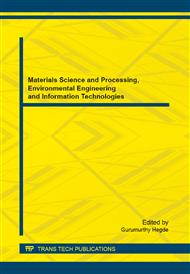p.404
p.408
p.412
p.416
p.420
p.426
p.430
p.436
p.440
Water Pollutant Control for a River-Lake Region to the Northwest of Lake Taihu
Abstract:
In this paper, Zhushan Bay watershed to the northwest of Lake Taihu was selected as the research area. Taking the developed river-lake connectivity and frequent exchange of pollutants into consideration, we put forward a calculation method of water environment carrying capacity (WECC) for river network based on multiple objectives of water quality reaching standard in river environment function zones and control sections, concentration profile constraint of sewage outlet. According to the proposed method, we calculated the watershed WECC, assigned to each control unit, and quantitatively analyzed the reductions and reduction rate of pollutants under the condition of total amount of each pollutant of control unit reach water quality standards. The results showed that: The pollution loads of each pollutant in Zhushan Bay watershed were greater than WECC. The reduction of COD, NH3-N, TN and TP is 834.4 tons, 226.1 tons, 724.8 tons and 108.9 tons, and the reduction rate of COD, NH3-N, TN and TP is 13.8%, 36.5%, 55.2% and 73.4%, respectively. This paper plays a guiding role in the research of total amount control of river network in Zhushan Bay watershed, and provides important references for total amount control of similar river-lake region.
Info:
Periodical:
Pages:
420-425
Citation:
Online since:
October 2014
Authors:
Price:
Сopyright:
© 2014 Trans Tech Publications Ltd. All Rights Reserved
Share:
Citation:


